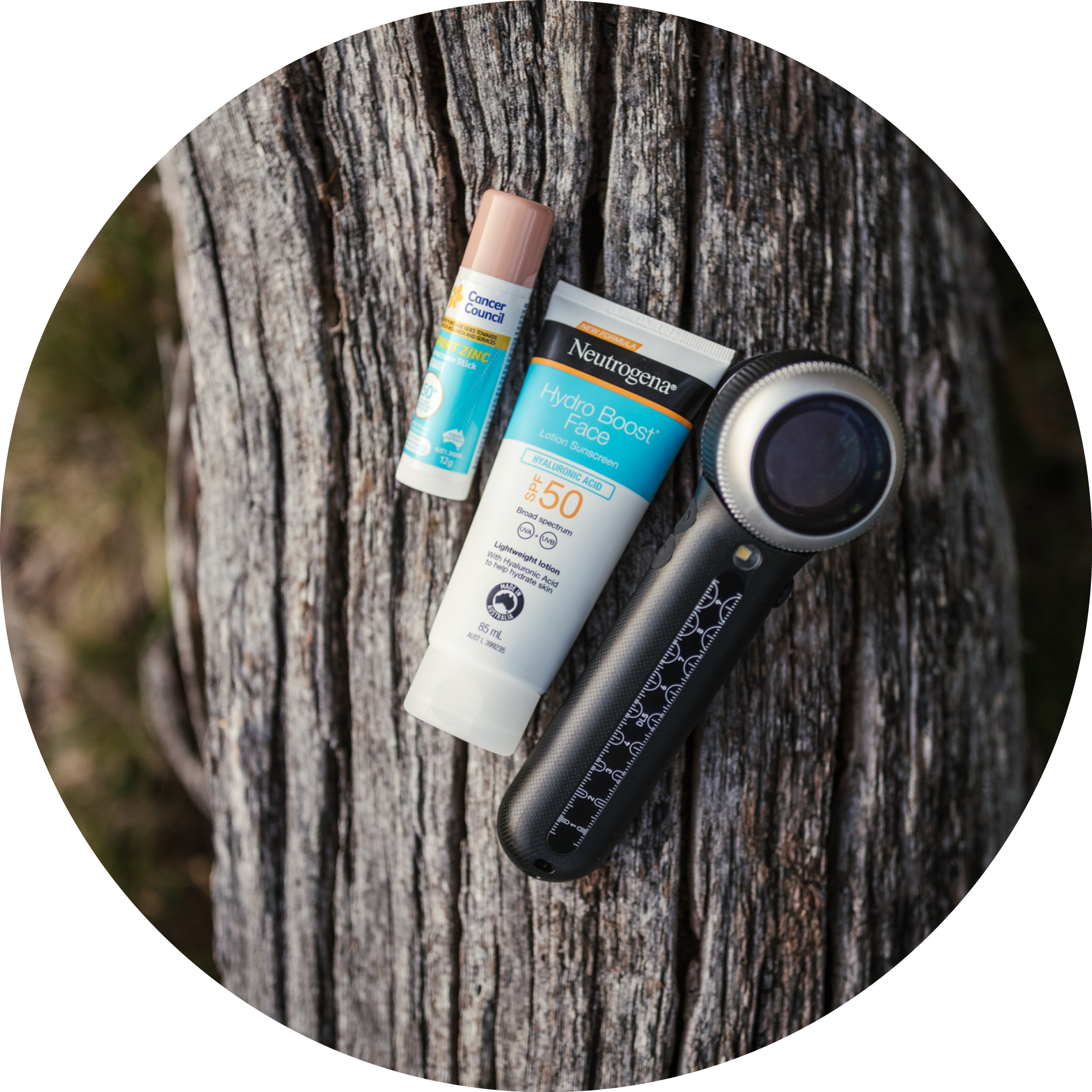Education
What is Skin Cancer?
Skin cancer is uncontrolled growth of abnormal skin cells, caused mainly by sun exposure.
Skin cancer occurs when abnormal cells in the skin grow in an uncontrolled way. These cells can damage nearby tissue and, in some cases, spread to other parts of the body.
The three main types of skin cancer correspond to the main types of cells found in the epidermis (the outer layer of skin):
- Basal cell carcinoma (BCC): about two-thirds of cases.
- Squamous cell carcinoma (SCC): about one-third of cases.
- Melanoma: only about 1% of cases, but the most dangerous.
UV sunlight is responsible for about 95% of all skin cancers (Cancer Council).

How Common Is It?
Two in three Australians will develop skin cancer in their lifetime.
Australia has one of the highest rates of skin cancer in the world. Around 2 in 3 Australians will be diagnosed with skin cancer during their lives.
Non-melanoma skin cancers (BCC and SCC) make up 99% of all cases, making them the most common cancers in Australia.
Melanoma is the third most common cancer overall (behind prostate and breast cancer) and a leading cause of cancer death.
Causes & Risk
Over 95% of skin cancers are caused by ultraviolet (UV) radiation.
More than 95% of skin cancers are caused by UV radiation. UV exposure can change how skin cells look and behave.
Key facts:
- UV radiation is invisible — it cannot be seen or felt.
- UV is not linked to temperature — even on cloudy or cool days, skin damage can occur.
- UV damage is cumulative — it builds up over years and cannot be reversed.
Learn more: Cancer Council – about skin cancer.
Risk factors include: fair skin, family history, outdoor work, multiple childhood sunburns, immune suppression, and toxin exposure (e.g. arsenic, cigarette smoke).
Prevention
Slip, Slop, Slap, Seek, Slide — five steps to protect your skin.
The iconic “Slip! Slop! Slap!” campaign, launched in 1980 by Sid the Seagull, was later expanded to five steps:
- Slip on protective clothing
- Slop on SPF 50 or 50+ sunscreen
- Slap on a wide-brimmed hat
- Seek shade
- Slide on sunglasses
Check the SunSmart UV Alert daily. Protection is needed whenever the UV Index is 3 or above.
Self-Examination
Check your skin every 3 months for new or changing spots.
Early detection makes skin cancers easier to treat. The Australasian College of Dermatologists recommends checking your skin from head to toe every 3 months.
Look for:
- New or changing moles
- Spots with irregular edges or multiple colours
- Lesions that bleed, crust, or don’t heal
Guides:
Professional Skin Checks
A full head-to-toe skin check using dermoscopy and photography.
Professional skin checks allow trained doctors to detect cancers early.
At an appointment, Dr Rankmore will:
- Discuss concerns and history
- Examine the whole body (patients usually undress to underwear)
- Use dermoscopy and clinical photography
- Provide chaperones or modesty sheets if requested
Simple treatments such as cryotherapy or biopsy may be performed immediately. More complex procedures are booked separately.
Treatments
Skin cancers may be treated with cryotherapy, creams, or surgery.
Treatment depends on the lesion:
- Cryotherapy – liquid nitrogen to freeze lesions
- Topical creams – e.g. Efudix for some pre-cancerous conditions
- Biopsies – confirm diagnosis
- Excisions – surgical removal of suspicious or confirmed cancers
Scar Management
Simple measures help scars heal well and fade over time.
Scarring is a natural part of healing. To reduce scarring:
- Use silicone gels or scar creams (e.g. Strataderm, Bepanthen)
- Massage scars gently after healing
- Apply SPF 50+ sunscreen daily

